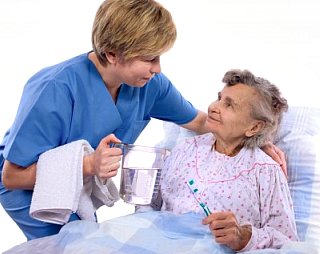Nursing Research Articles
Is anyone doing anything to address the generation gap?
Nursing Research Articles - Overall employment of nurse anesthetists, nurse midwives, and nurse practitioners is projected to grow 45 percent from 2020 to 2030, much faster than the average for all occupations. About 29,400 openings for nurse anesthetists, nurse midwives, and nurse practitioners are projected each year, on average, over the decade. Advanced practice registered nurses (APRNs) perform many of the same services as physicians. APRNs will be increasingly used in team-based models of care, particularly in hospitals, offices of physicians, clinics, and other ambulatory care settings, where they will be needed to provide preventive and primary care. Advanced practice registered nurses (APRNs) will also be needed to care for the large baby-boom population. As baby boomers age, they will experience ailments and complex conditions that require medical care. APRNs will be needed to keep these patients healthy and to treat the growing number of patients with chronic and acute conditions.
Fact : Generation Gap
Nursing Research Articles

When the term “Generation Gap” was coined in the ‘60s, it was meant to describe the obvious chasm between the thinking of America’s liberal youth and the more conservative older generation. Today, the same phrase is used to describe the situation in the nursing field, but it has nothing to do with politics and lifestyle. Instead, it characterizes the fact that older nurses far outnumber younger ones, with fewer younger nurses entering the field each year. You’ve probably seen it in the hospital where you work: one of your co-workers just retired and is replaced by a new nurse, but it’s not the 20-something person you were expecting; it’s a 42-year old.
Wendy, age 47, has been a nurse for five years in three different wards in two hospitals and is still surprised to find no one younger than she is in every ward she works. This story is repeated daily across the country and its implications for the future are frightening for everyone. A look at some of the numbers begins to tell the story. First, on a gross scale, the U.S. population in general is growing faster than the number of nurses. Between the years 1996 and 2000, the number of nurses increased 4.1%. This sounds good until you consider that the general population increased by 6.1%. This equates to an approximately 2% drop in available nurses per 100,000 patients. We all know this as part of the nursing shortage. According to Heather Gillies
Nursing Research Articles
Shortage of Nursing Staff
Became Even More Evident
During the COVID-19 pandemic, shortage of nursing staff became even more evident. Nurses experienced great strain, putting them at risk to leave their jobs. Individual and organizational factors were known to be associated with nurses’ turnover intention before the pandemic. The knowledge of factors associated with turnover intention during the pandemic could help to foster nurses’ retention. Therefore, this review aims to identify factors associated with nurses’ turnover intention during the COVID-19 pandemic. Shortage of Nursing Staff
The Nursing Profession is Facing A
Worldwide Recruitment Shortage
Recruiting males to the nursing profession: acceptability testing of the ‘Make a Difference with Nursing’ intervention for post-primary school students. The nursing profession is facing a worldwide recruitment shortage which could be partially addressed by recruiting more males. However, in many developed countries numbers of male nurses have traditionally been low. To address this issue we developed and tested a post-primary school-based intervention to recruit more males into the nursing profession.
Recruiting Males to the Nursing Profession
Nurses Encounter
Several Obstacles and Concerns
Nurses, as the primary human resource in the fight against COVID-19, encounter several obstacles and concerns. As a result, the current study used a qualitative method to describe the problems and adaptation techniques of nurses caring for COVID-19 patients. Nurses’ working conditions can be improved by providing adequate protective equipment, a suitable work environment, and more social and financial support; paying more attention to nurses’ physical and mental health; and considering appropriate communication mechanisms for nurses to communicate with their families and patients’ families.Nurses Encounter Several Concerns
Nursing Research Articles
Back to top of Nursing Research Articles
Back from Nursing Research Articles to For Your Dream Career


